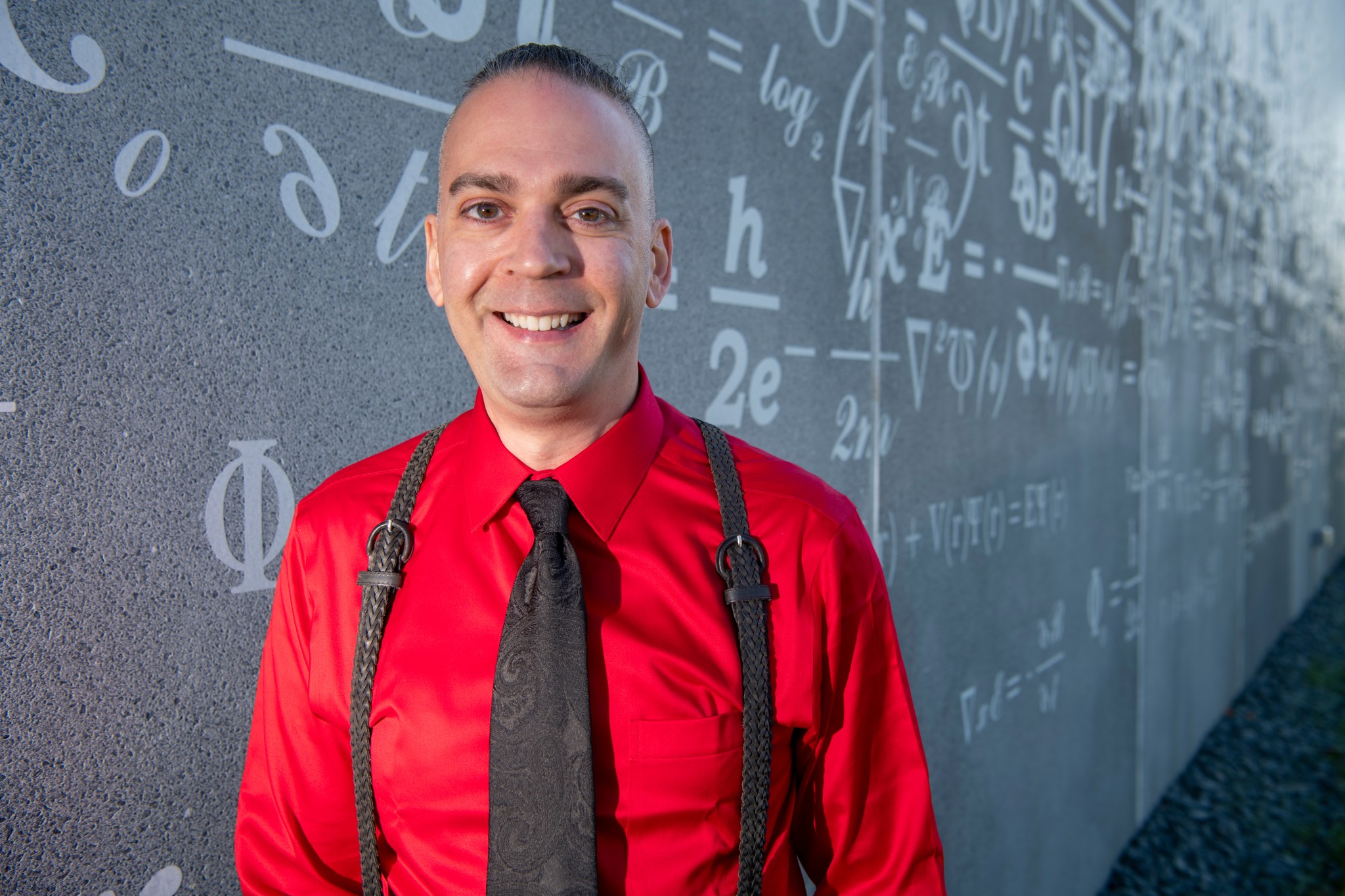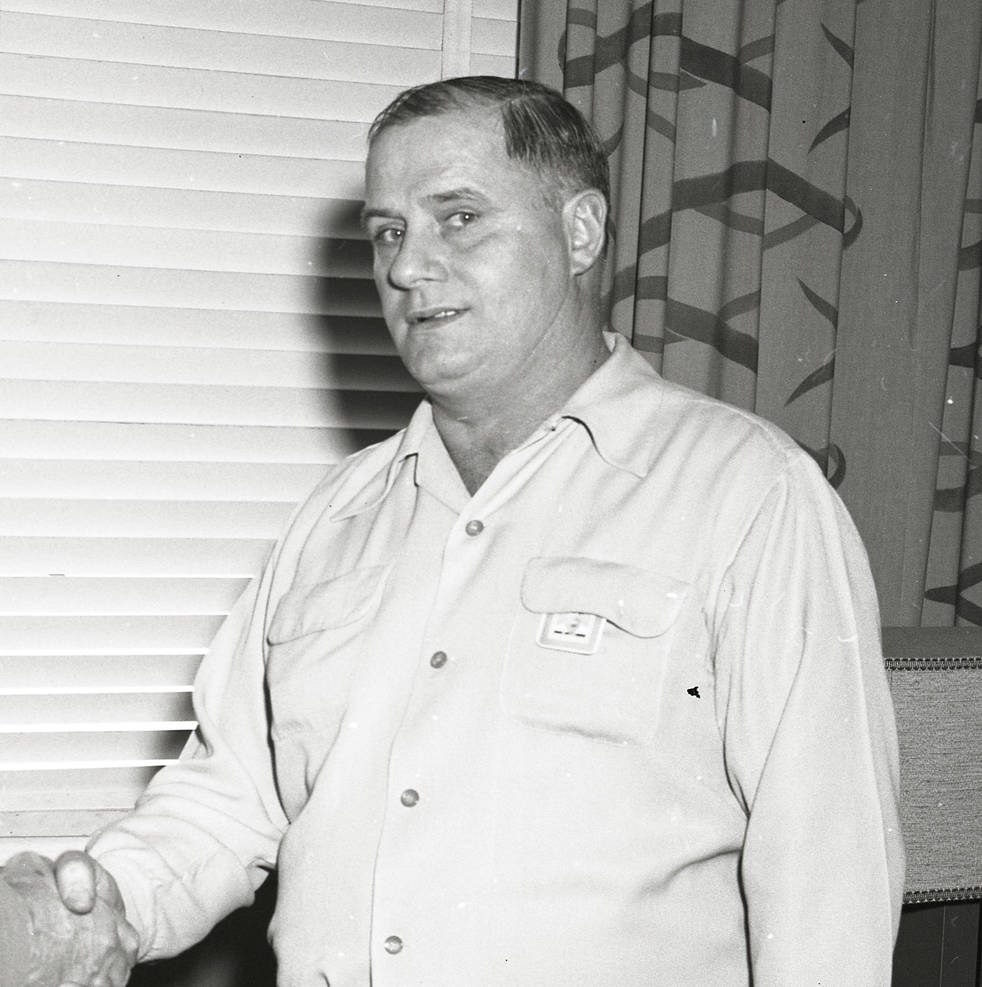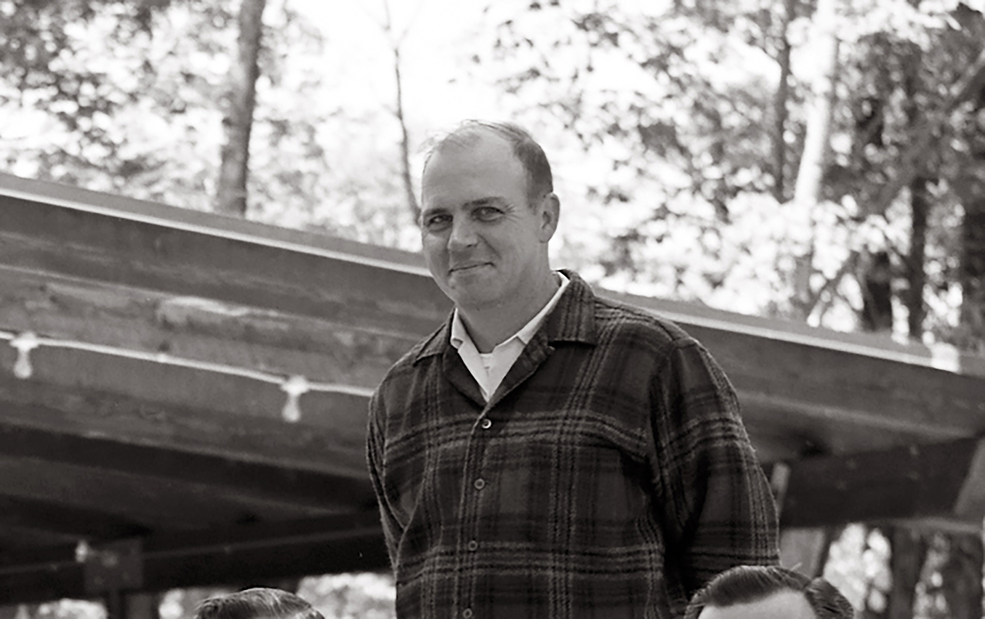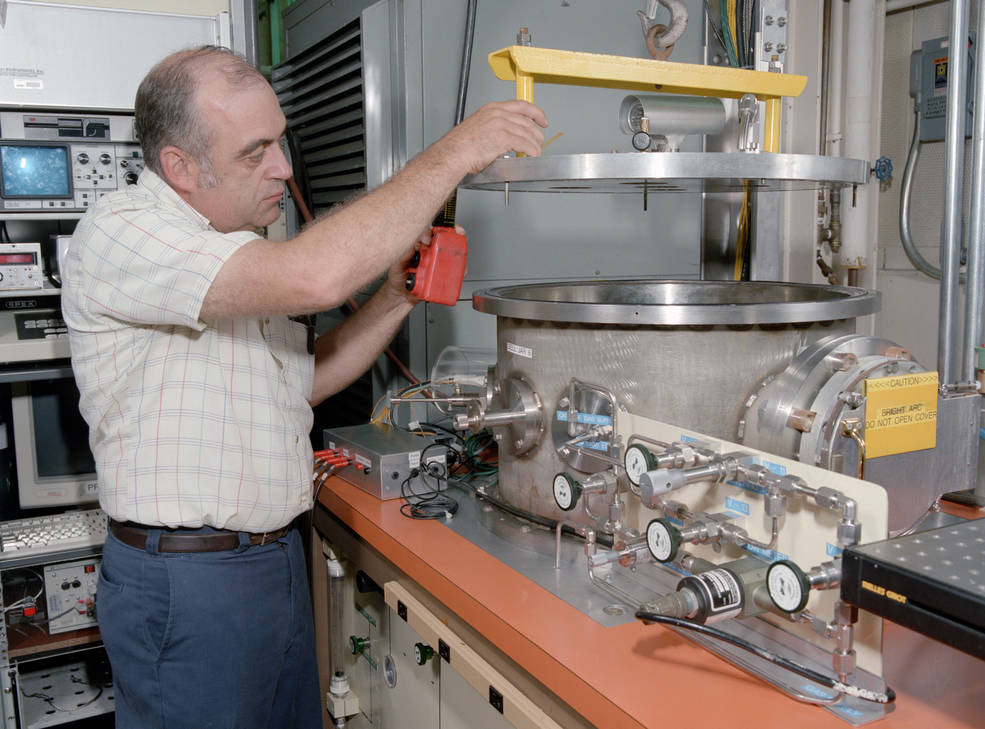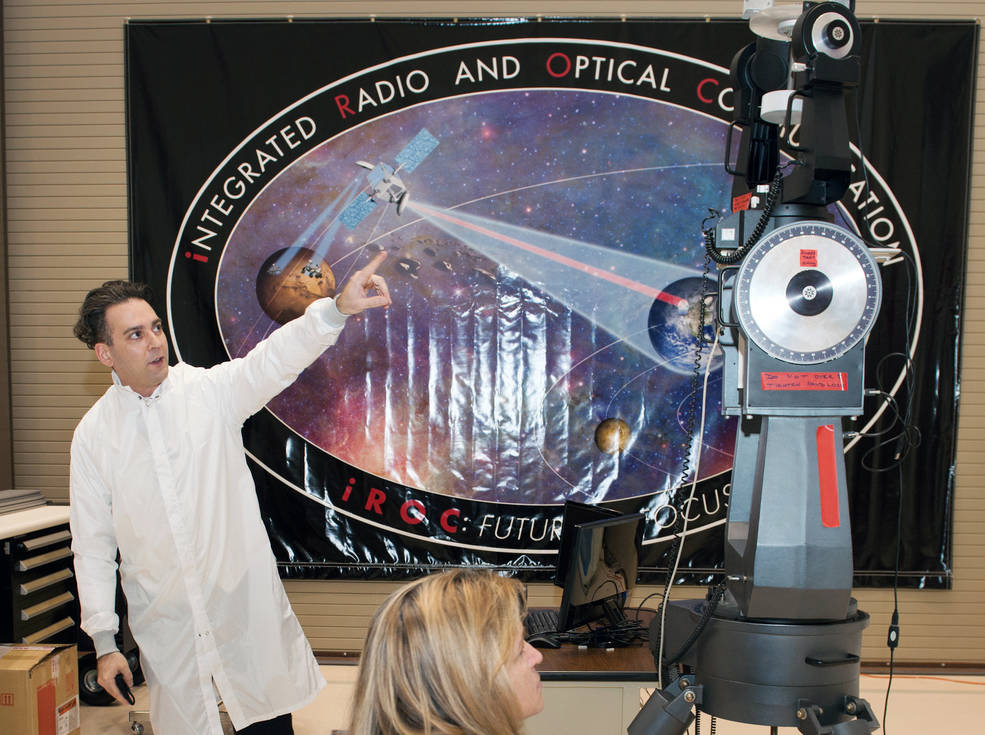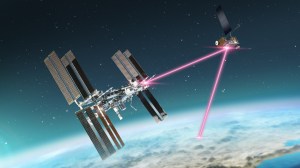For Daniel Raible, to say NASA is in his family’s blood is not hyperbole—in fact, it could be an understatement. The electronics engineer at NASA’s Glenn Research Center in Cleveland, can trace his family’s association with the center back to its inception in the early 1940s. Raible’s father, uncle, and two great uncles worked their entire careers at the center. Through the decades, each of his predecessors made distinct contributions to the center and shared their enthusiasm for building and problem-solving with the generation to follow.
Raible’s great uncle, William Jent, joined the National Advisory Committee for Aeronautics’ Aircraft Engine Research Laboratory (predecessor to NASA Glenn), as a fireman on December 8, 1941—the day after the Pearl Harbor attack and a week before the first group of permanent employees transferred from Langley Memorial Aeronautical Laboratory. Jent, who had learned boiler systems in the Navy, became an operator in the Steam Plant when it came online the following year and later supervised the crew. The plant provides heating and hot water to the other buildings and supports test operations in several facilities.
After World War II ended, another of Raible’s great uncles, George Mahnke, joined the Cleveland laboratory as a member of the Maintenance Section of the Buildings and Grounds Division. The section’s skilled craftsmen maintained and modified the various facilities. Mahnke was promoted to head of the section in 1955 and to head of the Buildings and Grounds Branch in 1963. In the latter role, he continued to supervise building maintenance while also managing the landscaping around the campus. Mahnke recognized that a well-maintained and aesthetically pleasing campus improved both employee morale and the center’s environmental health. In the 1960s, the center won local acclaim for its beautification efforts.
As the center was expanding for the space program in the early 1960s, Fred Jent (Dan’s uncle and nephew of both Bill Jent and Mahnke) became a technician assigned to the electric propulsion facilities. The center’s work on ion thrusters in the 1960s, including the Space Electric Rocket Tests (SERT I and II), demonstrated that electric propulsion was a viable option for space applications. In 1976 Jent moved to Mahnke’s Buildings and Grounds Maintenance Section where he served as foreman of the snow removal crew for several years, including Cleveland’s infamous Blizzard of 1978. Jent was responsible for training the staff, maintaining equipment and supplies, and developing plowing plans. In 1980, Jent resumed his former work as an electric propulsion technician. Jent took concepts from engineers and converted them into hardware that could be tested in a large vacuum tank and smaller bell jar chambers in the Electric Propulsion Laboratory. Jent’s expertise was such that he was frequently called on to explain the center’s vacuum facilities to new engineers.
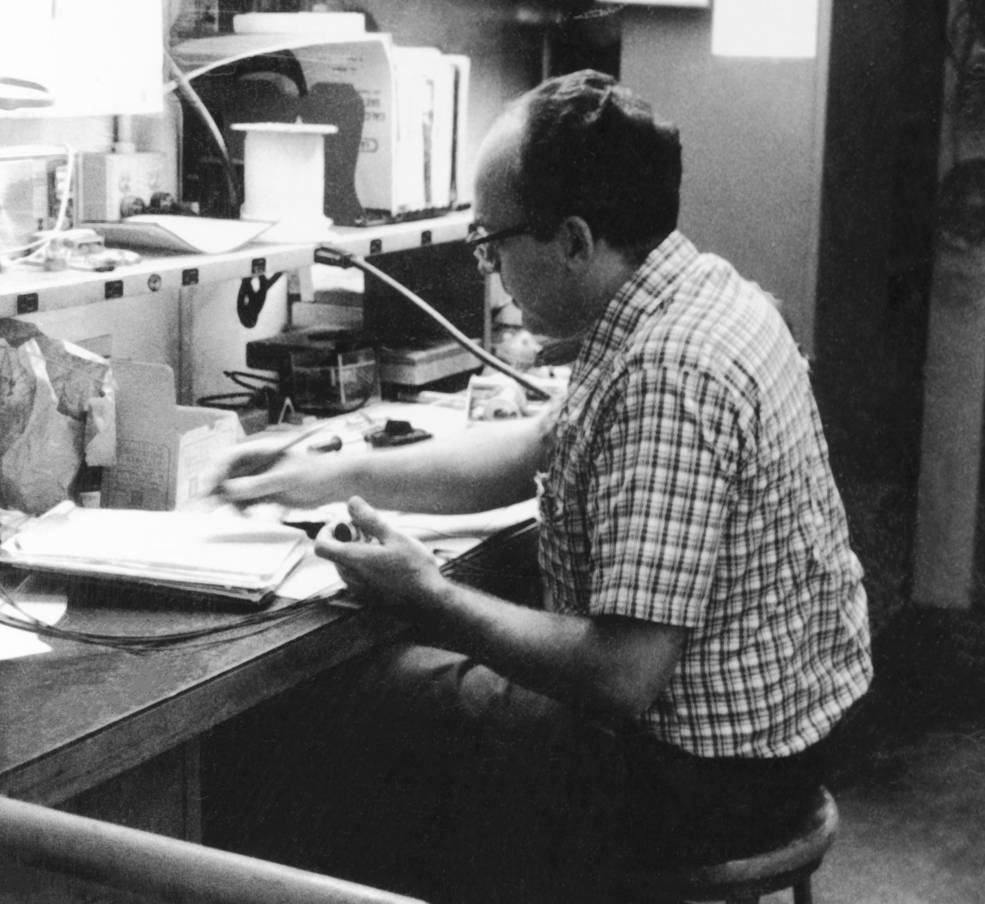
In the early 1960s, Dennis Raible joined the staff. He graduated from the center’s Apprentice Program in 1966 as an aerospace mechanic and worked at the Propulsion Systems Laboratory and the Icing Research Tunnel. Raible moved into supervisory roles in the 1980s, including as a technical assistant in the Fabrication Support Division. In this role, he served as the liaison between engineers and machinists and helped plan custom upgrades and maintenance of the Icing Research Tunnel and other facilities. He also helped organize the annual aeronautical facilities maintenance programs and coordinated manufacturing work with other NASA centers. Raible supervised the extensive planning of the center’s craftmanship exhibit for the EEA AirVenture in Oshkosh.
Despite his family history, Dan Raible did not initially intend to follow his predecessors’ footsteps to NASA. “Ultimately, my career chose me, in a way,” he explained. “I’ve always pursued general areas where I was interested and tried to identify unaddressed gaps where I could contribute.” Raible worked as an audio and electrical engineer in a manufacturing environment. He then completed his bachelors, masters, and doctoral degrees in electrical engineering from Cleveland State University in the 2000s. In 2009, he accepted an engineering position with NASA’s Space Communications and Navigation (SCaN) program to develop technologies enabling faster spacecraft data transmission. Raible was the co-principal investigator of SCaN’s Integrated Radio and Optical Communications terminal, which spearheaded the advancement of several optical communications technologies from deep space to Earth. Today he’s the principle investigator on the High-Rate Delay Tolerant Networking Project, which will soon be installed on the International Space Station.
Throughout his career, Raible has been proactively sharing his knowledge with a new generation through his extensive public outreach activities and service as an adjunct professor at the University of Akron.


























